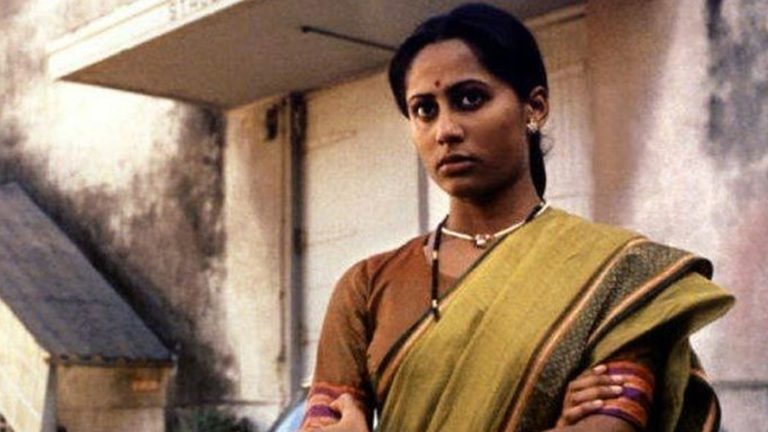The steadily increasing number of women behind the camera in India is enhancing the quality and visibility of entertainment.
Diversity – That has been the buzz word globally as the women in Indian entertainment industry seeks to right the female-to-male ratio in the power structure of corporations that define it. The steadily increasing number of women behind the camera in India is enhancing the quality and visibility of cinema through sensitive storytelling.
Women in Indian entertainment were nothing but a strengthening of stereotypes till a few years ago. They had to parrot male scriptwriter’s words under the guidance of a male director in a male producer’s production. But this has changed over the years as we have seen women actors taking centre stage with women writers, directors and producers calling the shots. We also have women of all age groups being entertainment icons and no longer asked to sidestep once they touch 40 years of age. And yes, leading ladies in the movies are actually leading the production than being a mere damsel in distress in a leading role.
The role of women in Indian entertainment society has changed like it has in Bollywood movies. A certain movie in the late 1980s ‘Biwi Ho Toh Aisi’ — also Salman Khan’s debut — had a matriarch. But unlike a patriarch, she was often referred to as “magroor aurat”. Because she had arrogance written all over her demeanour — a sole propriety of machoism.
Even in a film with a similar name ‘Ghar Ho Toh Aisa’, another matriarch had to see her husband getting bashed by her sons, and her sons getting bashed by the world for playing second fiddle to women. It was only when a man behaved like a “man” that he was praised for his masculinity.
This was perhaps a period of transitional change — more so, a lull — where similar roles were written for women. The period that preceded this belonged to the likes of Waheeda Rahman, Asha Parekh, Sharmila Tagore, Jaya Bachchan, Rekha, Hema Malini, Zeenat Aman, Deepti Naval, Shabana Azmi, Smita Patil and Sri Devi. With powerhouse actresses like these, the movies did not need an extra “tadka” of glamour.
It was their eyes that did the talking. There’s a scene in the climactic sequence of ‘Aradhana’ where Sharmila Tagore’s Vandana realises Sooraj already knows he is her son. She is called to the stage and is asked to present the medal to him. In the entire sequence, her face beams through the layers of make-up — she was made to put in order to look old. There’s hardly any cinegoer who does not choke in that scene. Such is the power of the “act” in the actress. And probably, the concept in a narrative.
Be it movies like ‘Rudaali’, ‘Arth’, ‘Masoom’, ‘Khoon Bhari Maang’ or ‘Chandni’, the yesteryear actresses gave enough challenge to the ‘hero’s machismo — and it takes a lot to say/write this when you have the then sensation (and now megastar) Amitabh Bachchan in the frame.
This was also the age where “maa” played the most important role in the life of a son. Unke paas maa hai, toh sab kuchh hai.
Times changed, and so did the roles of women in Indian entertainment being written for the Hindi movies. The lull — as mentioned earlier — saw a deluge of action movies, and actresses did not have much to do in those films. Even the David Dhawan comedies had little to offer to the actresses, thus leaving only a little scope for them to show their acting prowess. It was only with the emergence of the “young romance” genre that women became an object of desire. They always were, but the 1990s and the early 2000s had a mix of skin-show and item numbers. Most of them totally unasked for.
Showman Raj Kapoor had started this trend — of presenting his actresses in a glamourous light. But blame it on his craft, even the Mandakini-waterfall scene never looked out of place, or ‘vulgar’ in common parlance.
The 1990s and the early 2000s was the era of actresses being referred to as the hero’s “love interest”. And rightly so, because they did just that — loved their hero, and nothing else. There were slaps, and there was ridicule, and by that measure, ‘Kabir Singh’ was a gem.
There were sparks of brilliance too — but too sporadic to be remembered vividly. Meenakshi Sheshadri, Tabu, Madhuri Dixit, Kajol and the likes had roles in their respective movies that overpowered their heroes, but not the concept. The movies did not centre on them — except a few like ‘Gupt’, ‘Dushman’, ‘Astitiva’, ‘Anjaam’ and the likes. But the audience had not matured then to fully appreciate them.
A special mention to Sheshadri’s ‘Damini’ that for the first time, did not bash males to slam patriarchy. A huge step that was much appreciated too.
With the emergence of social media, feminism and women empowerment took centre stage in debates and discussions. And in cinema. So earlier when problematic films were hailed for the machoism of the hero, the post-2009 phase had people questioning their societal system.
This was also the phase where actresses took up filmmaking, and turned writers, directors and producers. They were earlier also involved in these aspects, but this was the phase of them outshining their male counterparts. Be it ‘Piku’, ‘NH10’, ‘Pari’, and the likes, there were better roles for women in Indian entertainment. And the actresses played them with all their might.
The likes of ‘Highway’, ‘Raazi’, ‘Queen’ and ‘Padmavat’ centred on women, and did not become another art-house film. They were hailed as mainstream cinema, and primarily for their superlative content.
Recent years have seen a happier curve for women, as they no longer need a male superstar to invite audience to theatres. ‘Queen’, ‘Saand Ki Aankh’ and ‘Mulk’ became a cult just by the virtue of the content, and author-backed roles written for women.
This year’s ‘Chhapaak’ and ‘Thappad’ are additions to the list where women are leading the pack and how! Especially ‘Thappad’ which debunked patriarchy in its own sweet little way — on the lines of ‘Damini’. But even Damini needed a Govind to meet her aim. Amrita in ‘Thappad’ is on her own. And that’s where it wins.
This is the age of Alia Bhatt, Deepika Padukone, Kangana Ranaut, Taapsee Pannu, Bhumi Pednekar, Priyanka Chopra, Anushka Sharma, Vidya Balan and Kriti Sanon, who don’t think twice before taking up a challenging role. This is the age where all kinds of movies are being made. And women have a special role in each one of them.
Women are being told to not undervalue themselves — that they are not second fiddle to men. Not anymore. And these concepts are being appreciated — be it ‘Queen’, ‘Nil Batey Sannata’ and ‘Engligh Vinglish’.
Filmmakers like Zoya Akhtar, Meghna Gulzar, Ashwini Iyer Tiwari, Ekta Kapoor and Nandita Das; and scriptwriters Juhi Chaturvedi and Kanika Dhillon have broken the glass ceiling when it comes to ruling the sets.
And this is also the age where problematic movies like ‘Kabir Singh’ are being called out — an outcome of the #MeToo movement — and on a much wider scale. They are being watched too. But being called out is also a great step forward in debunking the patriarchal hangups that have been crippling the Indian cinema.






Add comment